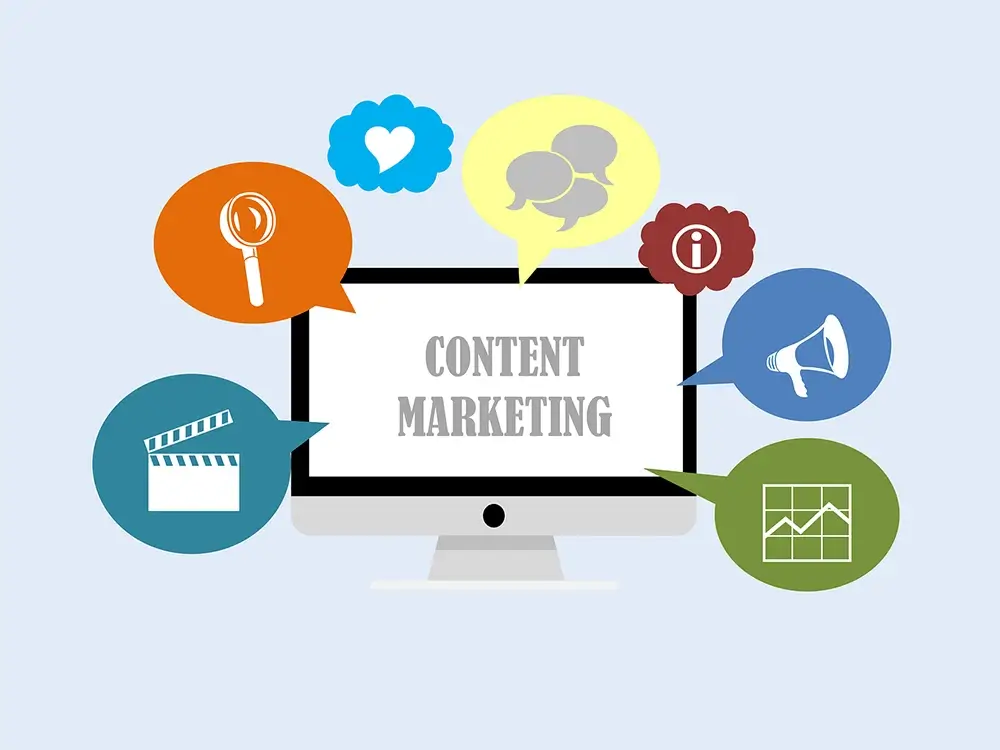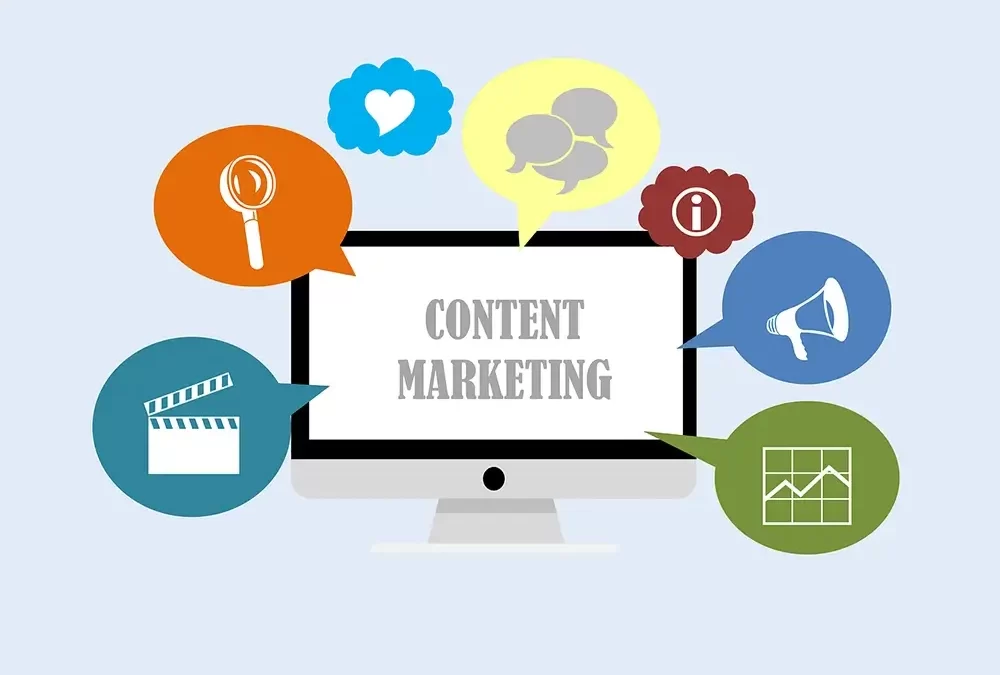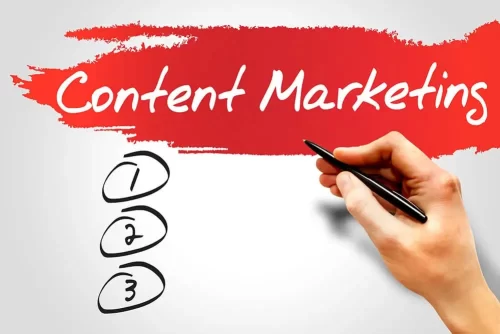Creating a content marketing funnel could be the key to getting more out of your marketing efforts. It helps you attract and nurture leads, instead of letting them slip away. So, how do you create a successful content marketing funnel? This article will guide you through the steps from attracting initial interest to building trust and driving sales. Let’s get started.
AI + Human Edited Content Creation.
Only $0.01 per word!

What Is a Content Marketing Funnel?
A content marketing funnel is intended to connect with audiences at various stages of the buying process.
The idea is that most buyers are not ready to make a purchase immediately after becoming aware of a brand.
For example, according to the marketing rule of seven, a customer needs to interact with your brand an average of seven times before making a purchase. They need more information and time to consider their options. A marketing funnel helps nurture these leads rather than letting them get away.
The funnel tracks users through each stage, from awareness to becoming a customer. The three stages include:
- Top
- Middle
- Bottom
The top of the funnel covers the awareness stage, which is when potential customers first discover your product or service.
The middle of the funnel is used to nurture your leads. It is your chance to provide more information about how your solution can help with their problems.
The bottom of the funnel helps convert leads into customers. It often includes content aimed at explaining the unique benefits that you provide.
An email marketing platform or a customer management system (CMS) can help with the management of your funnel. They make it easier to manage email lists and keep track of leads as they move through your funnel.
Here is a closer look at the three main stages of a marketing funnel:
Top-of-the-Funnel Content
You first need top-of-the-funnel (TOFU) content to grab the audience’s attention. This is when customers first become aware of your product or service, such as through an advertisement, a search query, or a social media post.
Creating TOFU content is necessary for attracting and engaging potential customers at the beginning of their buyer’s journey. Here are some tips to make this content more effective:
- Identify your audience. Understand the demographics, interests, and pain points of your target audience.
- Provide value. Make your content informative and educational. Blog posts, infographics, landing pages, and how-to guides are often used for this stage in the funnel.
- Focus on SEO. Optimize your content for research engines. This helps increase your online visibility and chances of people discovering your content.
- Leverage social media. Share your content on social media platforms to reach a broader audience. Engage with your followers through comments, shares, and likes.
- Use visual elements in your content. Incorporate images, videos, and infographics to make your content more engaging and easier to digest. Visual content also tends to perform better and may help explain complex concepts more effectively.
- Offer free resources. Providing free resources can help you capture contact information from new leads, helping you keep them moving through your marketing funnel. Examples include eBooks, templates, and webinars.
- Measure and adjust. Regularly analyze the performance of your content using tools such as Google Analytics. Track conversion rates, total website traffic, bounce rates, page visits, engagement, and other metrics to understand what works and refine your strategy accordingly.
Middle-of-the-Funnel Content
The middle-of-the-funnel (MOFU) content helps demonstrate your value proposition. You offer a glimpse at your solution to their problem through case studies, newsletters, and other content.
MOFU content aims to nurture leads who have shown interest in your brand but are not yet ready to buy. Here are several tips for creating effective MOFU content:
- Focus on engagement. Provide more in-depth and detailed content. Address specific challenges. You are trying to show your brand’s strengths by offering practical solutions.
- Highlight your expertise. Establish your authority by sharing success stories, industry reports, and expert opinions. These steps can build trust with your audience.
- Personalize the content. Whenever possible, use data from previous interactions to personalize content. Tailor emails, recommendations, and offers based on their browsing behavior and preferences.
- Offer comparisons. Create comparison guides and product demos to highlight the advantages of your products or services over the competition.
- Share testimonials. Customer testimonials, reviews, and case studies help demonstrate customer satisfaction and success. Real-world examples can reassure leads of the value that you provide.
- Include a strong call to action. Ensure that your content includes clear, compelling CTAs. Encourage your leads to move on to the next step, such as requesting a consultation or scheduling a demo.
Bottom-of-the-Funnel Content
The bottom-of-the-funnel (BOFU) content is intended to convert visitors into customers. Product pages, pricing pages, and comparison tools can help give your audience more confidence in your offerings.
Here are a few strategies for creating better BOFU content and converting more leads:
- Highlight your value proposition. Clearly articulate the unique benefits and value of your product or service. Demonstrate how it solves specific problems and meets the needs of your audience.
- Offer free trials or demos. If possible, offering a free trial or demo can provide potential customers with the opportunity to experience your product firsthand. This can help build confidence and drive conversions.
- Highlight customer success. Continue to use detailed case studies and testimonials to show how your product has helped others. Highlight measurable results and customer satisfaction to build greater trust.
- Provide detailed comparisons. Detailed comparison charts and guides can help differentiate your product from competitors. Highlight features, benefits, pricing, and other key factors that influence purchasing decisions.
- Use discounts and incentives. Offer special promotions, discounts, and other incentives to encourage immediate purchases. For example, limited-time offers can create a sense of urgency and drive sales.
- Provide a smooth checkout process. If your goal is for customers to complete an online transaction, make sure that you offer a streamlined checkout process. Optimize this process by minimizing the steps involved, offering multiple payment options, and ensuring a secure, user-friendly experience.
Conclusion
Building a successful content marketing funnel requires you to create content aimed at audiences as they move through the buying journey. The top of the funnel often contains blog posts and other informational content to attract visitors.
The middle of the funnel includes content aimed at establishing your expertise and the value of your products or services. The bottom-of-the-funnel content is designed to convert leads into customers.
After implementing your marketing funnel, continue to track metrics and look for room for improvement. Find the areas where visitors and leads tend to fall out of the funnel to identify content that you can improve for better results.
100% human-written content by native English writers
OUR BLOG




